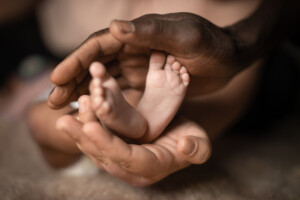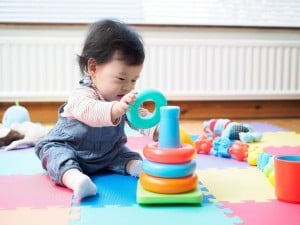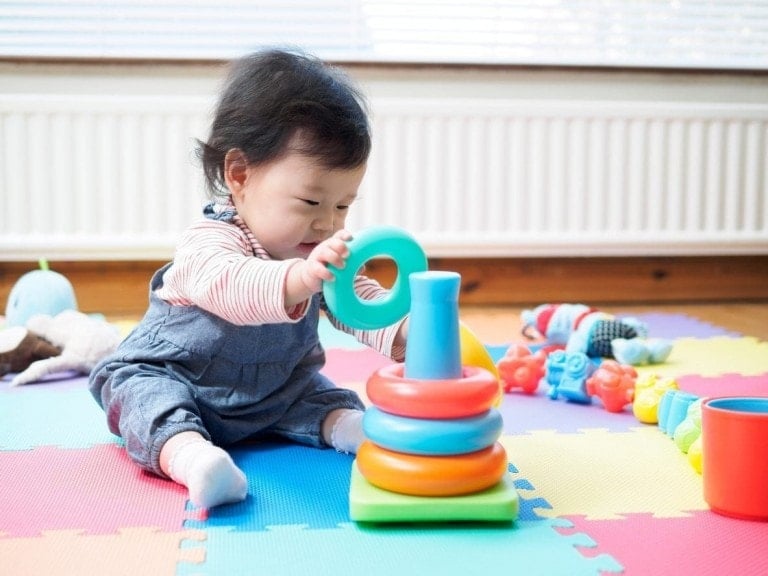Swaddling is a great way to keep newborns safe while mimicking their feelings of warmth when in the womb. It also helps them avoid being awoken by the Moro reflex (aka the startle reflex). But it’s important to know when to stop swaddling your baby so you can keep them safe and prepare for the next stage of sleep.
When Should You Stop Swaddling Your Baby?
Every baby is different, but experts recommend paying attention to both age and developmental milestones.
The key timeframe for stopping swaddling your baby depends primarily on their activity, but age should also be a consideration. As soon as your baby rolls over, it is time to transition them out of the swaddle. Typically, this occurs between two and four months, but every baby is different. If your baby is not rolling by four months, I recommend transitioning at this time to help promote that milestone.
Moreover, being in a swaddle at this age and stage of development can increase your baby’s risk of SIDS.1
Around this time, your baby becomes strong enough to break free of their swaddle. Once they get their arms free from the blanket, it becomes a risk of suffocation.
Signs It’s Time to Stop Swaddling
Even if your baby has yet to roll over, it might be time to transition out of the swaddle. It is good for their development to have their arms free. Babies older than 12 weeks tend to sleep better without the tight wrap of a swaddle. But the primary sign is when your baby rolls and is nearing 3 and a half months old.
As a pediatric sleep consultant, I’ve seen that if a baby is being swaddled for longer, it can make the baby more prone to waking up later because they have become accustomed to the feeling of the swaddle.
How to Transition Out of Swaddling
The transition from swaddling looks different for every baby. Some babies might do okay if you stop using the swaddle cold turkey if they aren’t attached to their swaddle. If your baby loves being swaddled, here are gentle ways to help them adjust.
Leave One Arm Out
Give your baby some freedom by continuing to use the swaddle, but leave one arm out. The other should be tightly swaddled close to their body, as usual. You can choose to leave either hand out, but most parents prefer to leave the hand the baby sucks on most frequently.
Swaddle With Both Arms Out
Once your baby gets used to sleeping with just one arm out for a few days, transition to both arms out. Wrap the swaddle close to their chest and torso, but allow them free range of movement with both of their arms. Some parents start at this step.
Use a Sleep Sack for Transition
With a standard swaddle that has the baby’s arms down beside them or at their chest, another great product that can help with this transition is a sleep sack. While I don’t recommend transitional products, some sleep sacks that cover the baby’s arms (such as the Love to Dream Swaddle Up) are good choices because they can zip off one of the wings, giving your baby access to one or both of their arms. They provide that same snug feeling and help if the baby accidentally rolls over in the middle of the night. You could also try a basic sleep sack (also known as a wearable blanket) to see how your baby does with it.
The good news is that you can continue swaddling your little one for a while longer if you leave their arms out. The tightness of the swaddle around their chest area leaves them with that same snug and comforting feeling, promoting better sleep. However, if they do roll over, they will have a better chance of rolling back with hands and arms free.
How to Get Your Baby to Sleep Without a Swaddle
Many parents worry about sleep disruptions, but these strategies can help.
- Establish a good bedtime routine — feeding, rocking, and a lullaby can all be essential components
- Play white noise and dim the lights or use blackout curtains
- Give your baby a luxurious massage — here’s how to do infant massage
- Offer a pacifier
Transitioning out of the swaddle can feel tough, but it’s just another step in your baby’s growth. With patience and consistency, you’ll both adjust and soon find a new rhythm for safe, peaceful sleep. Remember, this stage is short, and before long, your baby will be sleeping soundly without the swaddle.





































